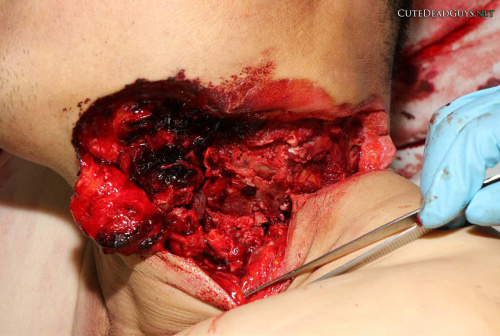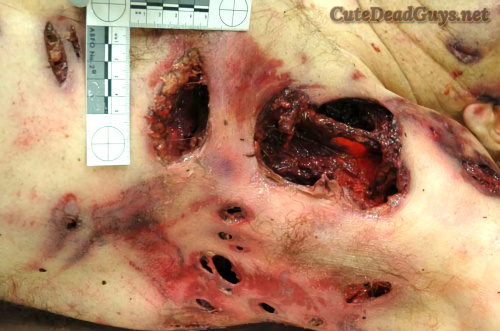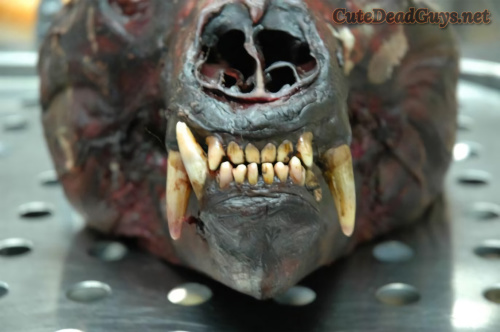Progression of human decomposition in a 136kg & 73kg cadaver (300lbs & 160lbs)
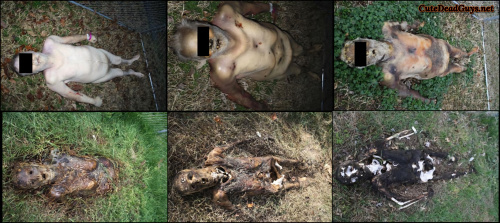
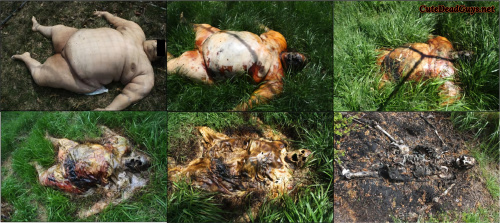
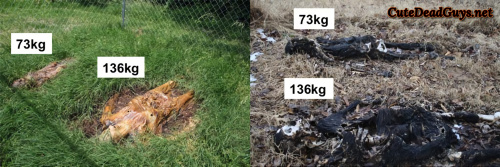
Forensic taphonomy investigates variables affecting human decomposition, in part to provide investigators with an accurate estimation of the postmortem interval (PMI) in cases involving decomposed remains to advance forensic science’s understanding of regional decomposition and decomposition in specific circumstances.
Some of the major variables impacting decomposition rate and pattern include temperature, insect access, deposition conditions (surface, burial, or submersion), and scavenging. It is hypothesized subjects with larger mass will decompose at a more rapid rate than smaller subjects during early decomposition.
This research was undertaken at the Southern Illinois University (SIU) Complex for Forensic Anthropology Research. Twelve unautopsied, adult human subjects deposited between December 2012 and September 2015 were included in this study. The subject sample includes three females and nine males aged 49– 95 years, ranging in mass from 73 to 159 kg. Previously frozen subjects were excluded from this research, as frozen remains have been demonstrated to decompose significantly differently from never frozen remains. Subjects were deposited in the fresh stage as soon after death as possible and placed nude, supine, directly on ground surface within CFAR. Chain-link enclosures were employed to limit medium-to-large-bodied terrestrial and avian scavenging, but insect access was unimpeded. Although scavenging is sometimes a normal part of decomposition, large pigs were skeletonized in as little as 7 days by black vultures (Coragyps atratus) during the proxy stage at CFAR and the necessity of observing the entire progression of soft tissue decomposition in this study required its minimization.
Data were collected daily: multiple digital images of the entire subject and each body region, TBS (total body score), and written descriptions regarding weather, decomposition patterns, insect activity, scavenging, and any other noteworthy observations. TBS quantifies the decomposition process by assigning numeric scores based on visible, external decomposition. To assess whether variation in insect activity or daylight impacted results, subjects were divided into Spring/Summer and Fall/Winter depositions.
The correlation between body mass and KADD (Kelvin accumulated degree days) at all five TBS thresholds was statistically nonsignificant. Additionally, there was no statistically significant correlation between body mass and KADD at any TBS threshold when controlling for variation in seasonal factors. Body mass explained up to 14.4% of variation in decomposition rate depending on the stage with all subjects included and between 1.7% and 24.0% of variation in rate in the Fall/Winter subjects.
Fixed, one-way ANOVA (analysis of variance) revealed no significant effect of body mass on the rate of decomposition, measured by amount of thermal energy required to reach decomposition thresholds. Qualitative differences in decomposition patterns were observed. Higher mass subjects exhibited noticeably increased adipose tissue liquefaction and greater adipocere formation and displayed a relatively larger cadaver decomposition island (CDI), the area of concentrated decomposition fluid surrounding decomposing remains. These differences can be appreciated in Figures 1 and 2.
There were no statistically significant correlations found between subject mass and the rate of decomposition, measured by the KADD required for each subject to reach five TBS thresholds that followed the progression of decomposition. Further, there was no statistically significant effect of body mass on decomposition rate. Although minor patterned differences were observed between smaller and larger mass subjects, these differences did not impact the rate of decomposition and the end result for human decomposition in southern Illinois, a mummified tissue shell covering skeletonized elements, is similar for all adult body masses regardless of season of deposition
The differences in the range of adult body masses included in this study, 73–159 kg, predominantly stemmed from variation in body fat content, with smaller subjects having less adipose tissue and larger subjects having more adipose tissue. Differences observed in decomposition pattern were in line with differences in body fat, and higher mass subjects exhibited increased adipose tissue liquefaction, greater adipocere formation, and the formation of a relatively larger CDI. These patterned differences may not have translated into differences in the rate of decomposition because they did not directly elevate the TBS. Thus, qualitative differences were observed, but these differences were not substantial enough to impact the rate of decomposition as quantified by externally visible characteristics.






